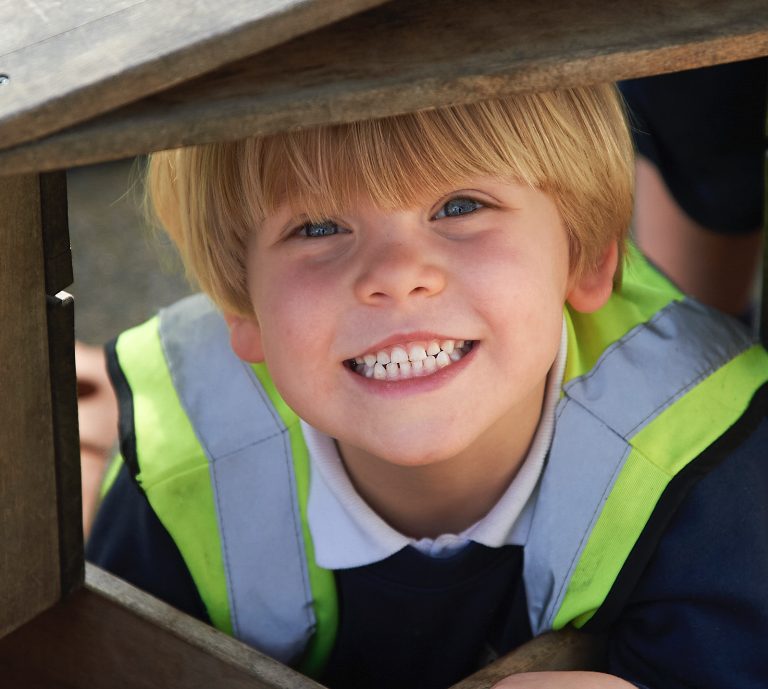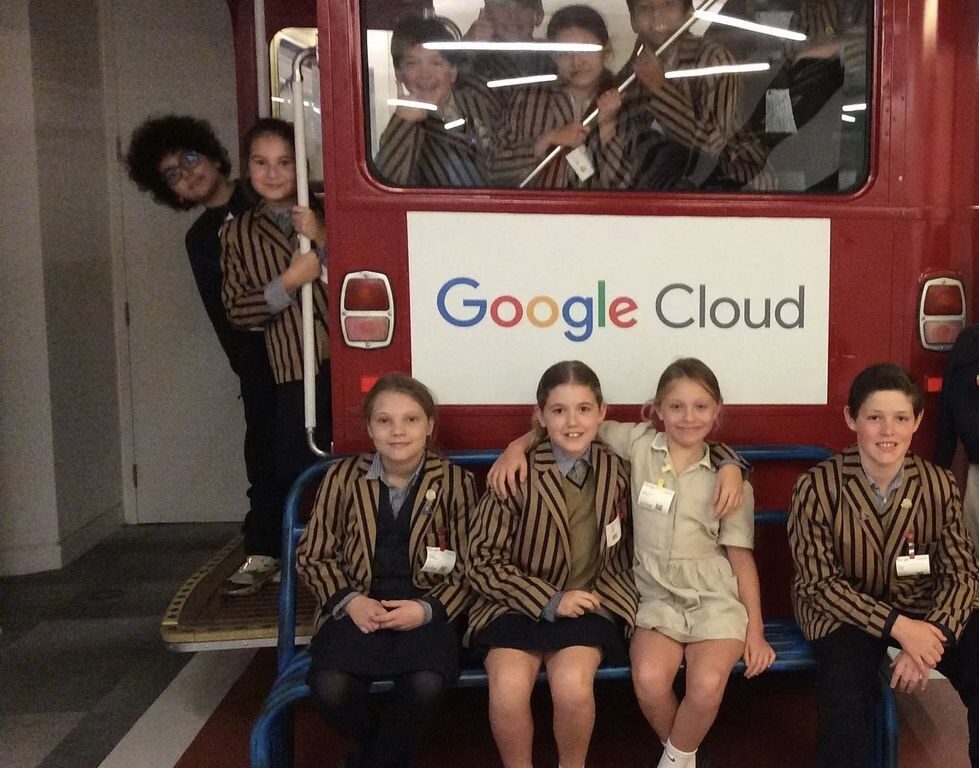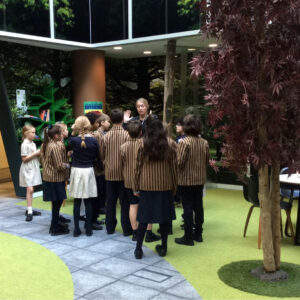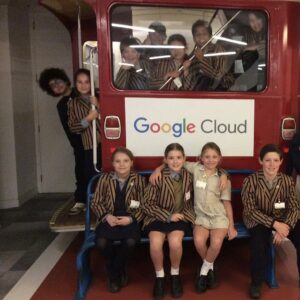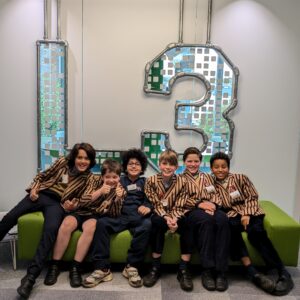On Friday 4 October 2024, Years 5 and 6 children had the privilege of visiting Google’s Belgrave House office in Victoria (its first London office) in advance of next half-term’s project Tomorrow’s World. As well as a guided tour of the offices (the bus was a favourite), Kate Howell gave us a presentation about the company (and its parent Alphabet).
During the presentation, we learned the origins of the company name – it comes from googol (a number featuring 1 followed by 100 zeroes). Google search is the main part of the business with 3.5 billion searches every day on Google (remarkably, 15% of those searches are new).
Although its search engine is the main part of the business, it is one of several products within Google that have over one billion users each: the others are YouTube, Gmail, Maps, Android (operating system for phones), Play Store, Photos, Drive and Chrome.
One of many highlights of the presentation was learning about the ethos of Google X which specialises in innovation and “moonshot thinking”. This references John F. Kennedy’s setting the goal for the United States of America to send people to the moon. According to one of the speakers in the video, moonshot thinking (inspired by the Apollo space programme), is about “choosing to be bothered” by our inability to do the seemingly impossible. The concept of being willing to “fail fast” in attempting to achieve ambitious goals was also discussed.
Google’s hiring process was later discussed. According to the presentation, Google’s hiring process looks at four elements in potential employees: general cognitive ability (problem-solving); leadership; role-related knowledge; and “Googleyness” (which includes considering how to bring diversity of thought into the world).
Children then benefitted from an invaluable discussion of challenging questions of the type asked in Google interviews (and, more prosaically, in school interviews). For example, we were asked: how many footballs do you think are sold in the UK every year? Children were prompted to consider what type of information would help them to give an answer to this question (suggestions included the UK population, the popularity of football and how many shops sell footballs). It was noted that these questions required time to think, as well as a willingness to revise one’s thinking.
Once again, this was a hugely inspiring trip received enthusiastically by child and adult visitors alike. Many thanks to Kate for inviting us to spend some time at the office.

